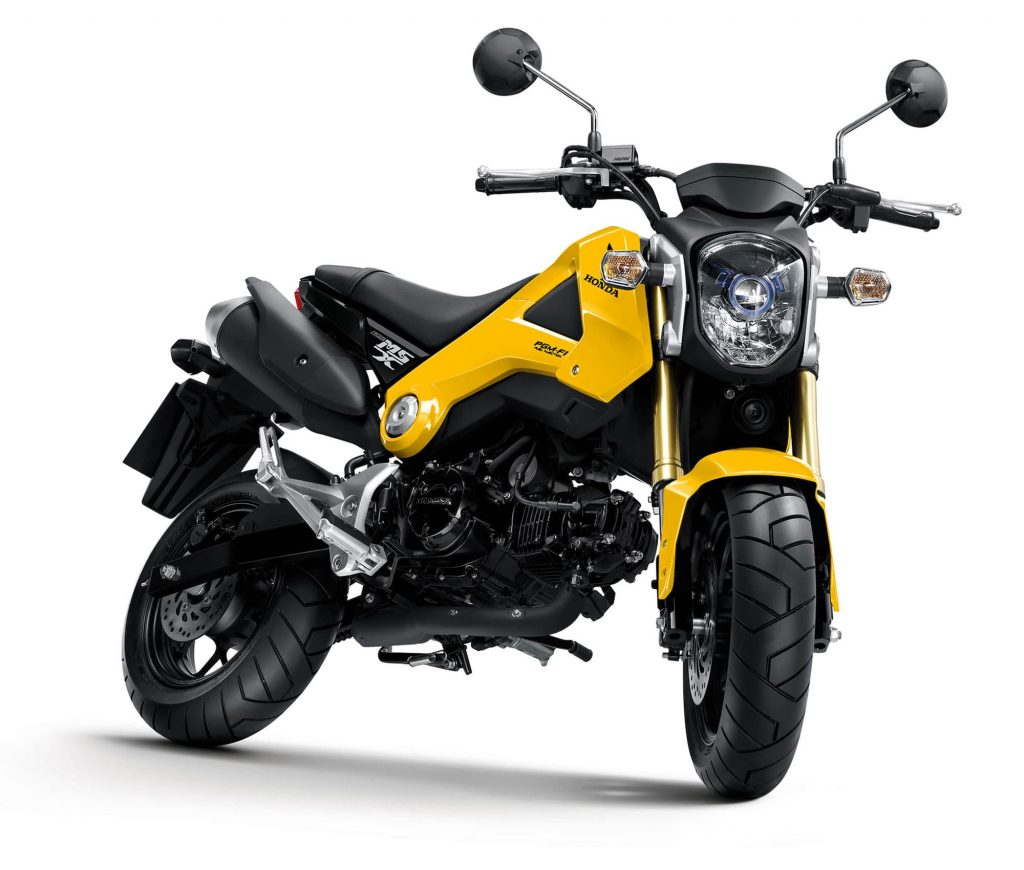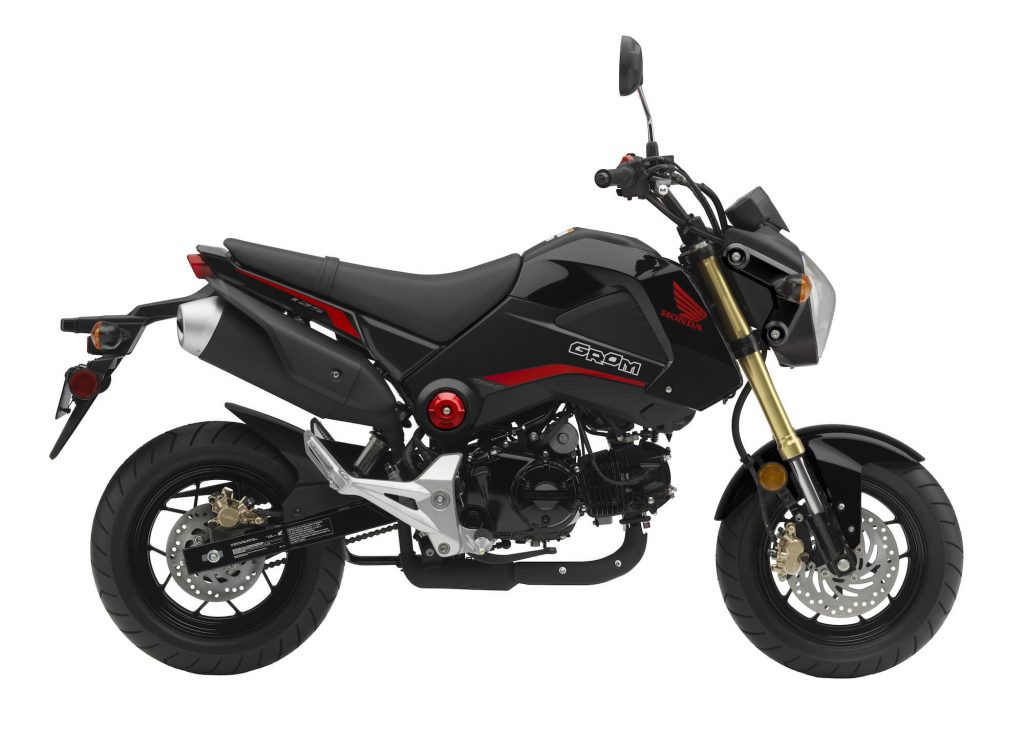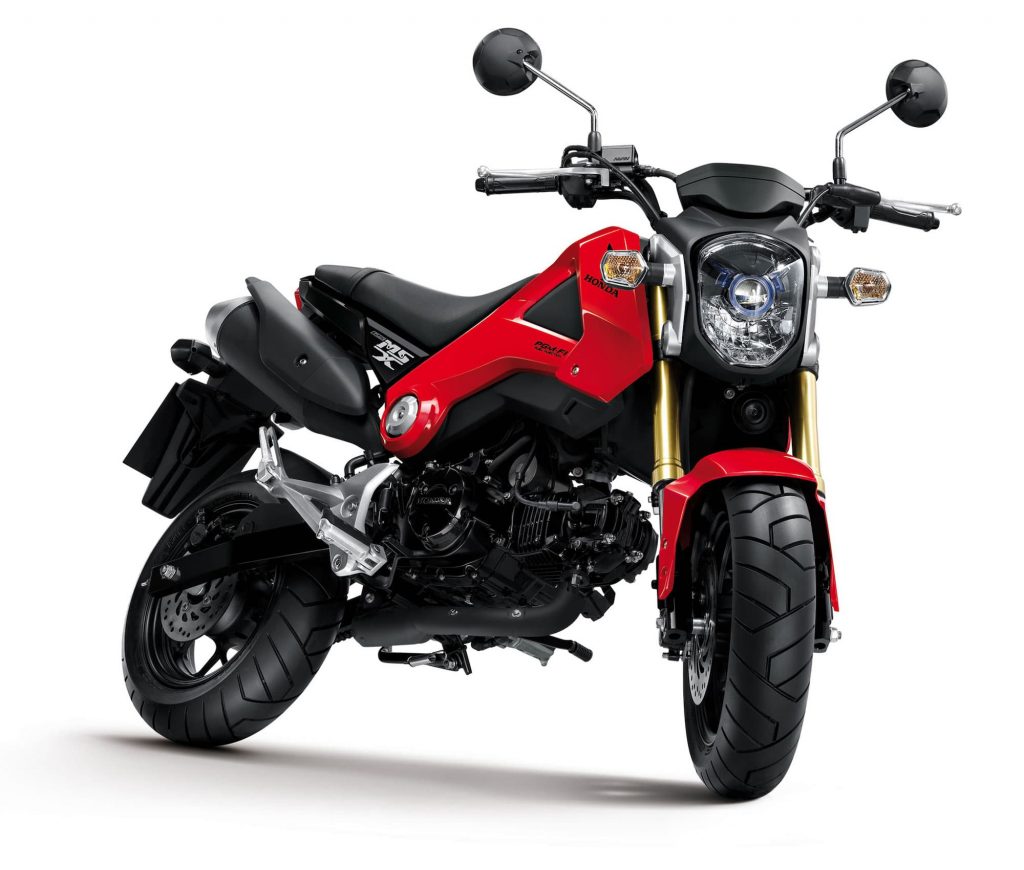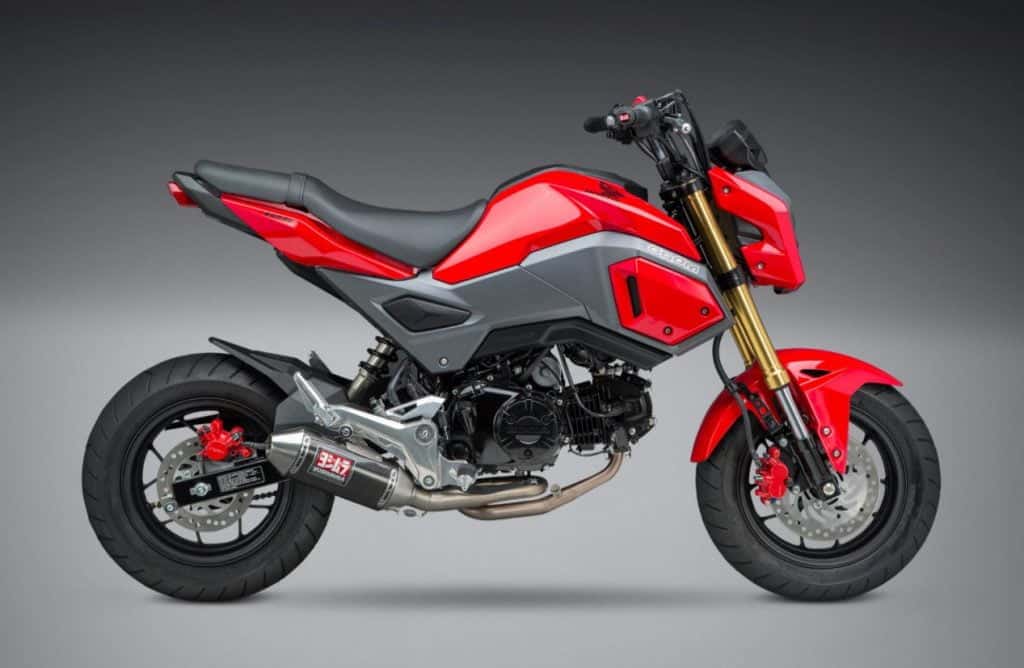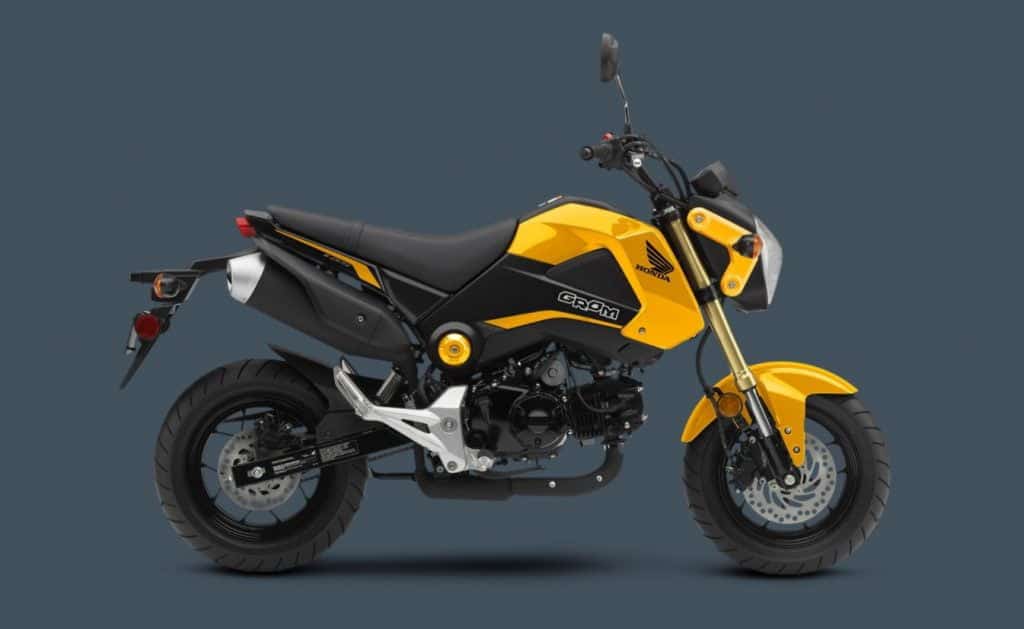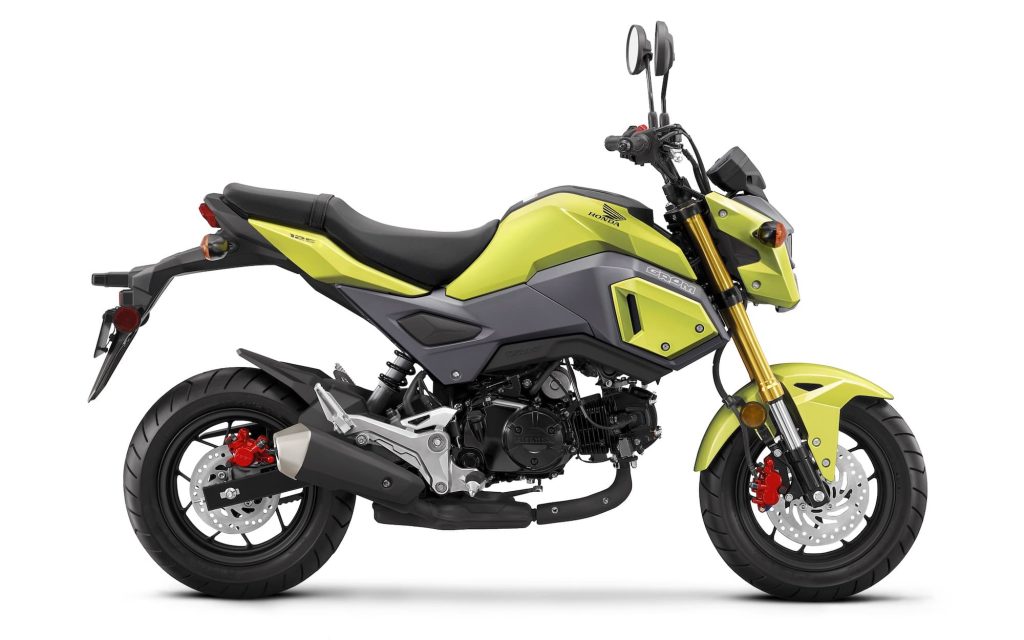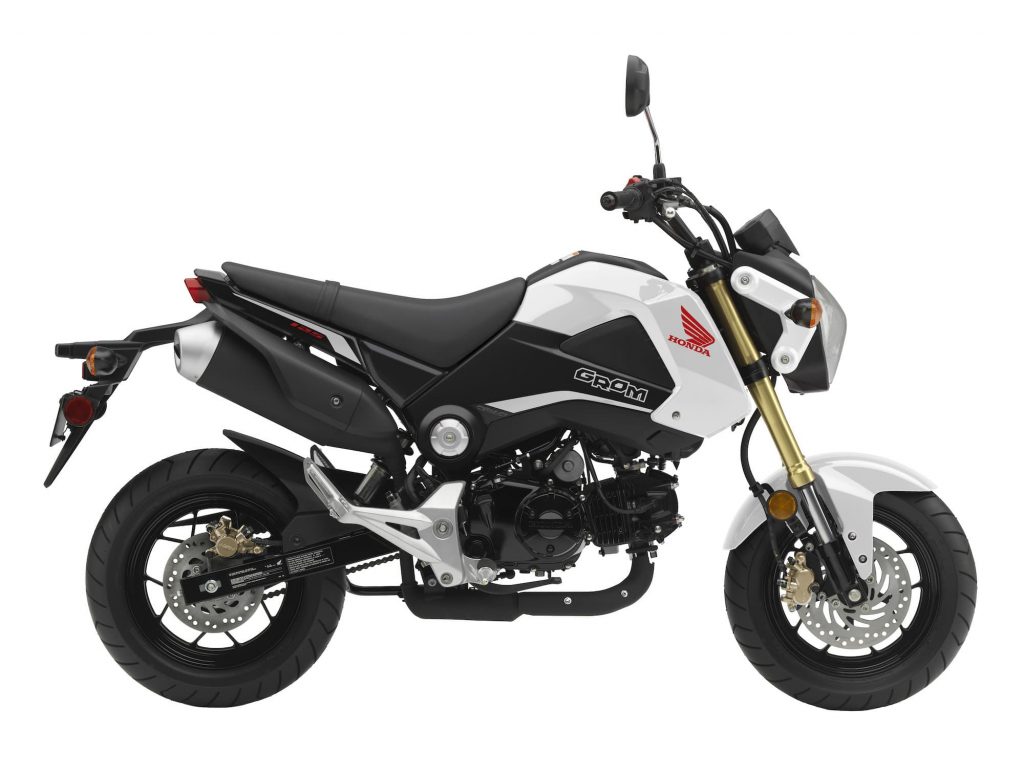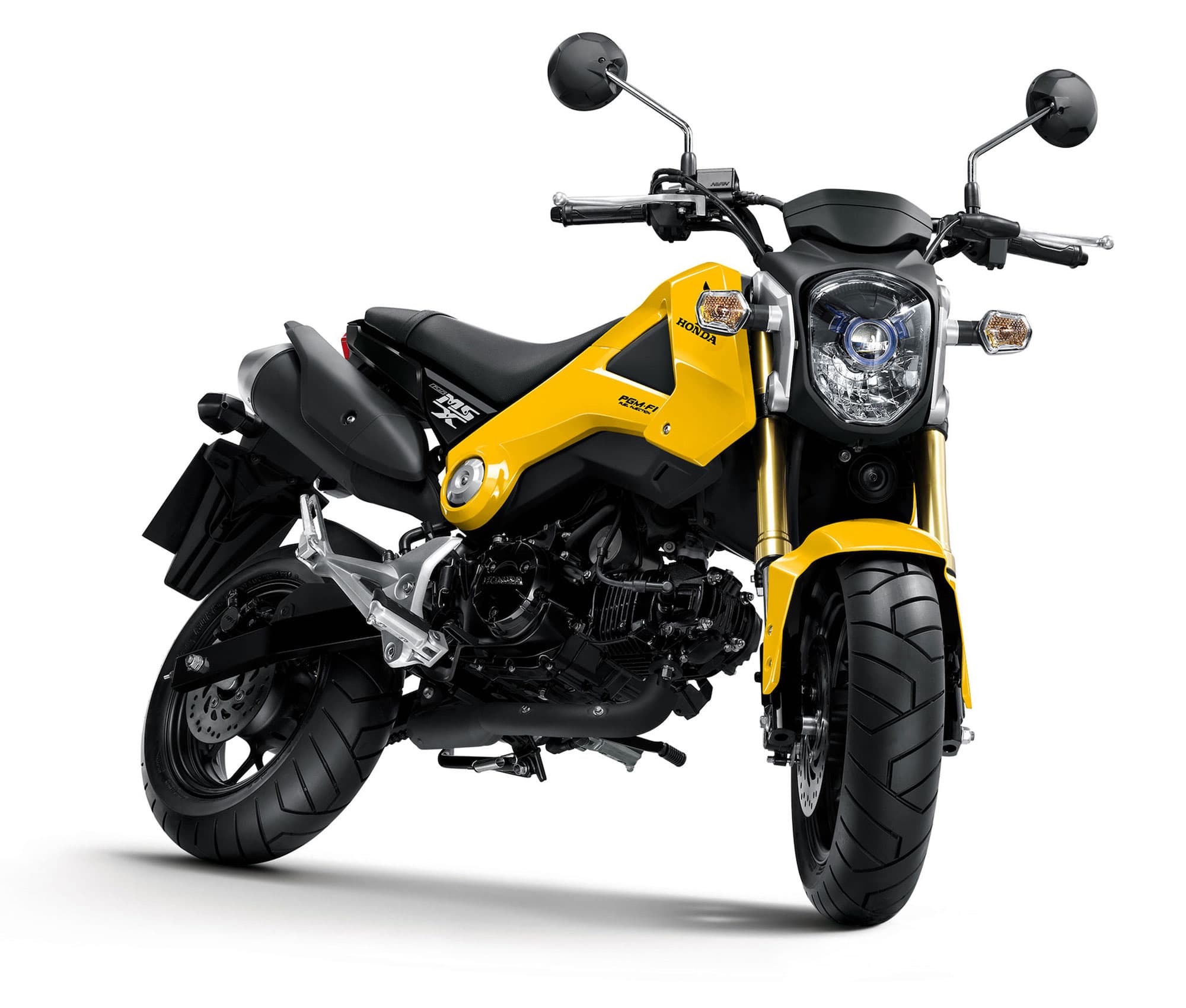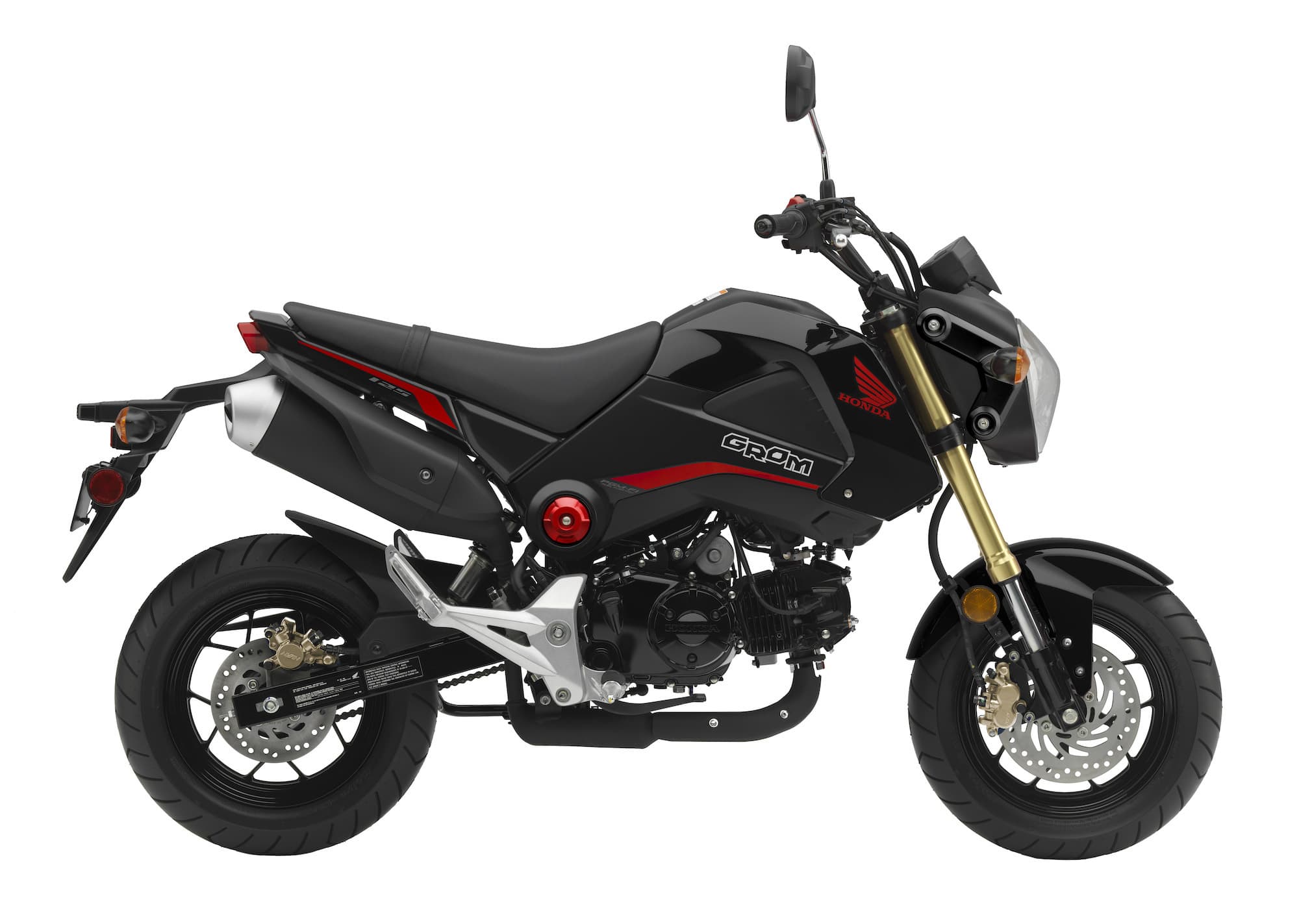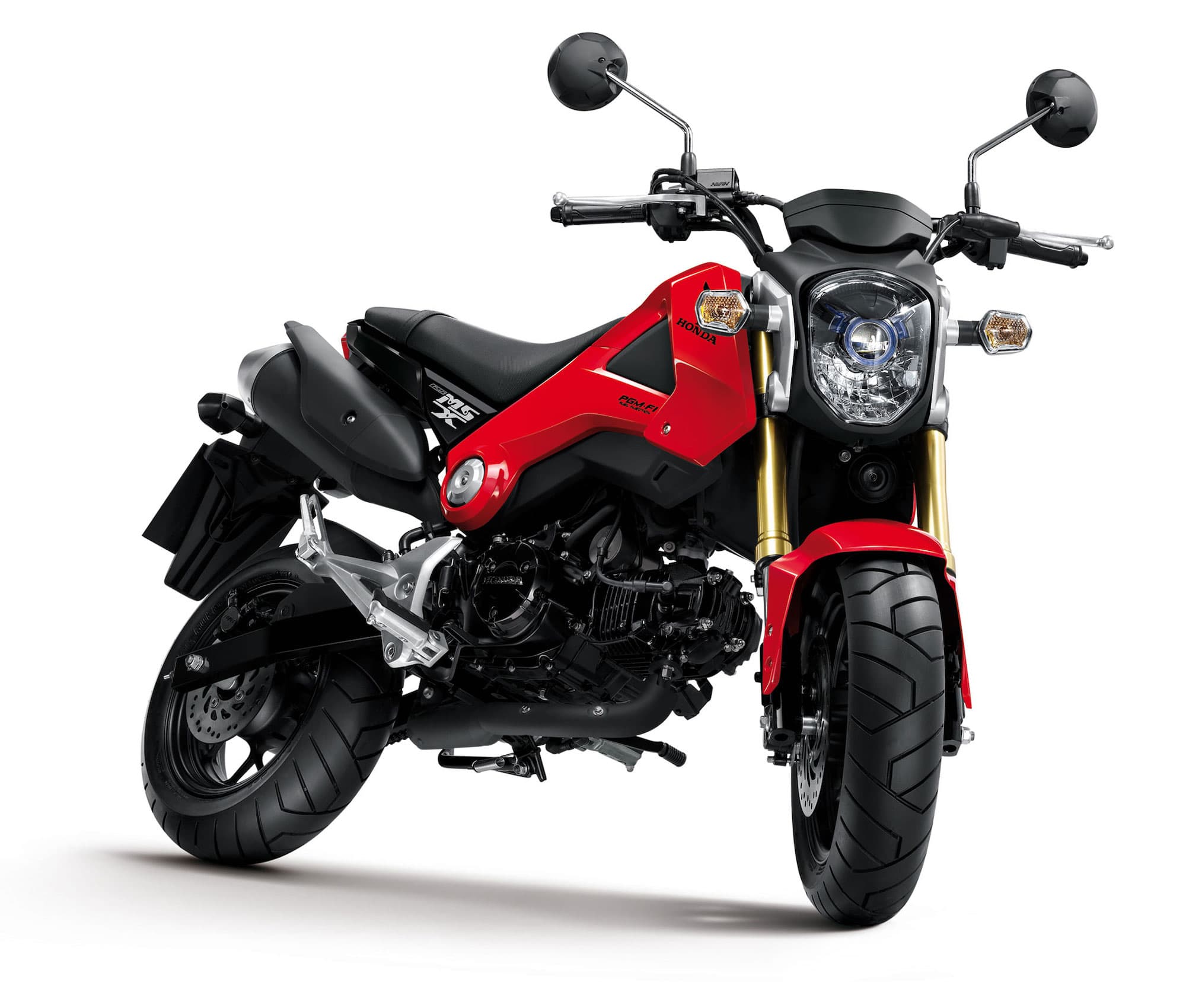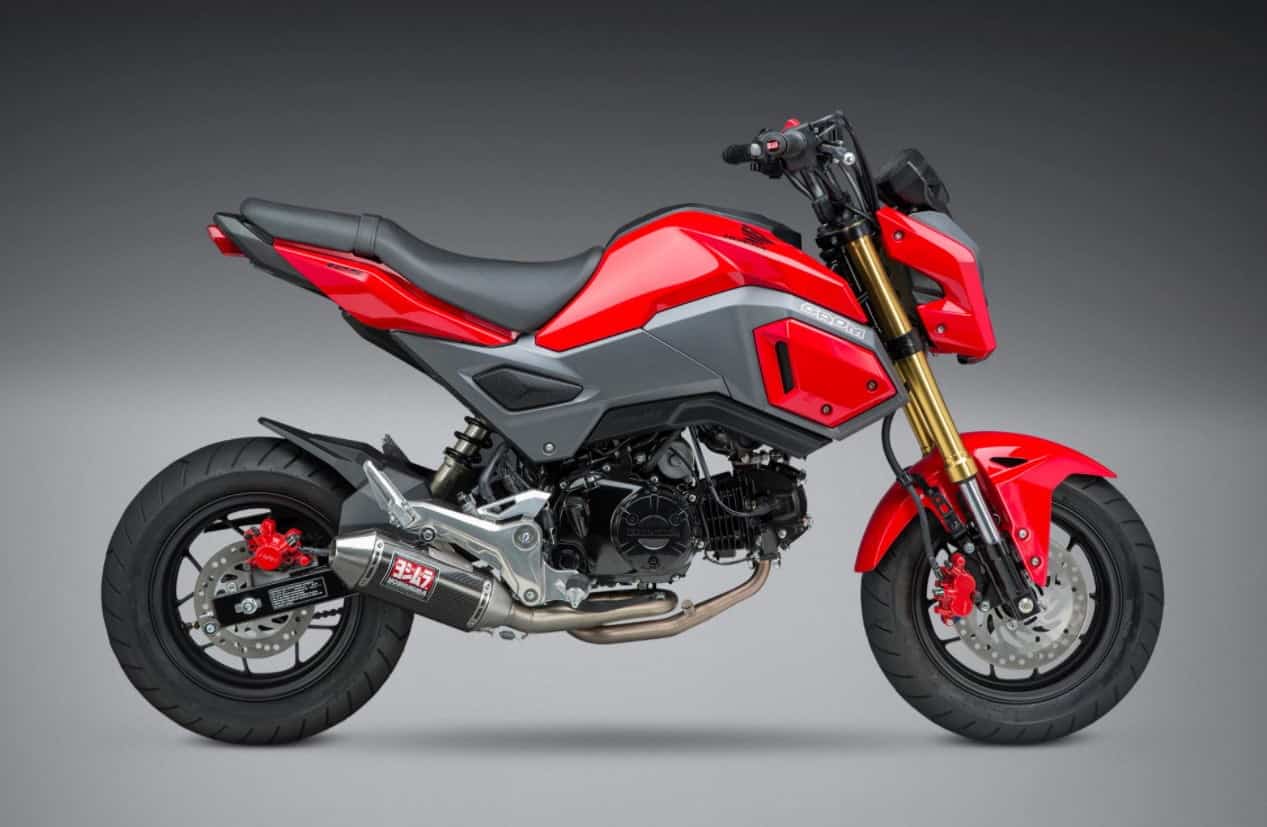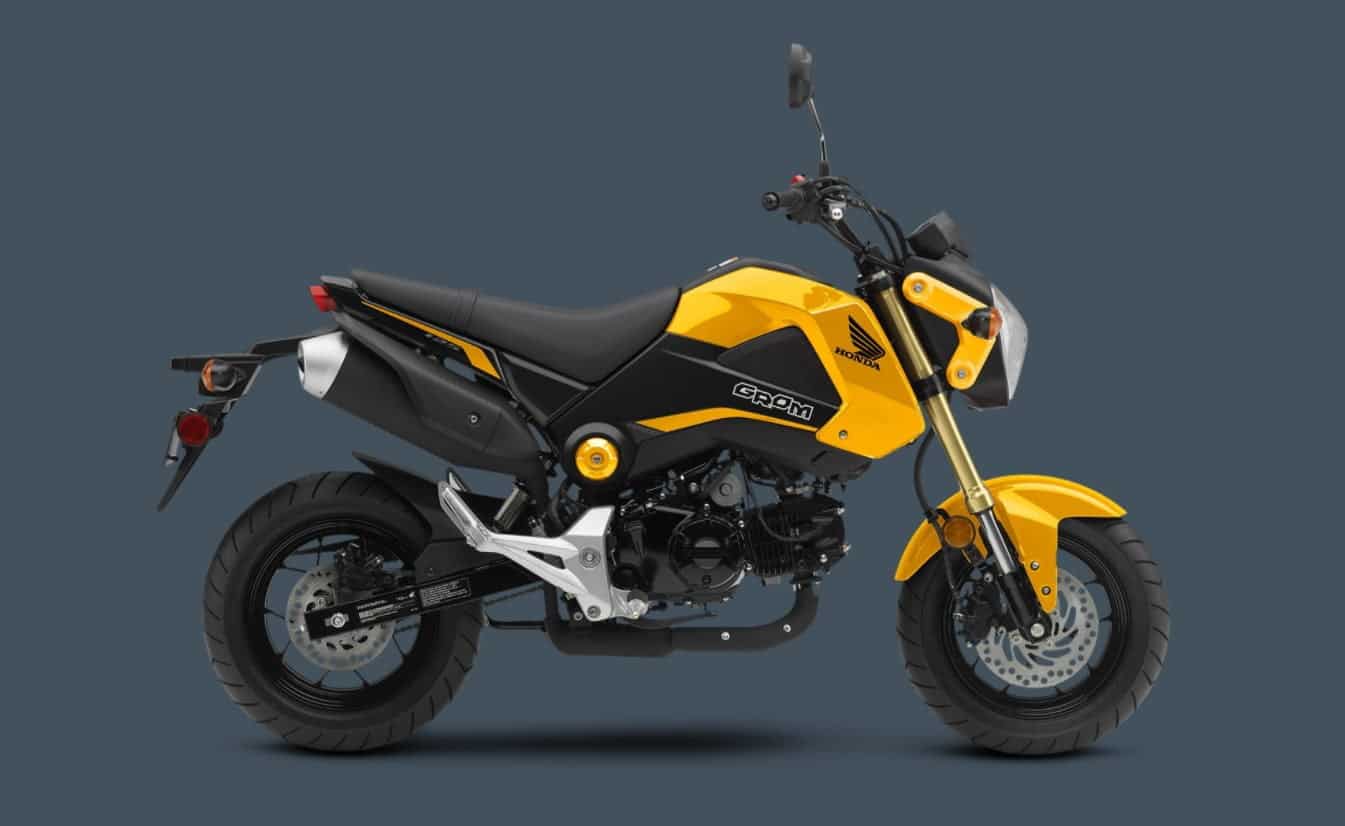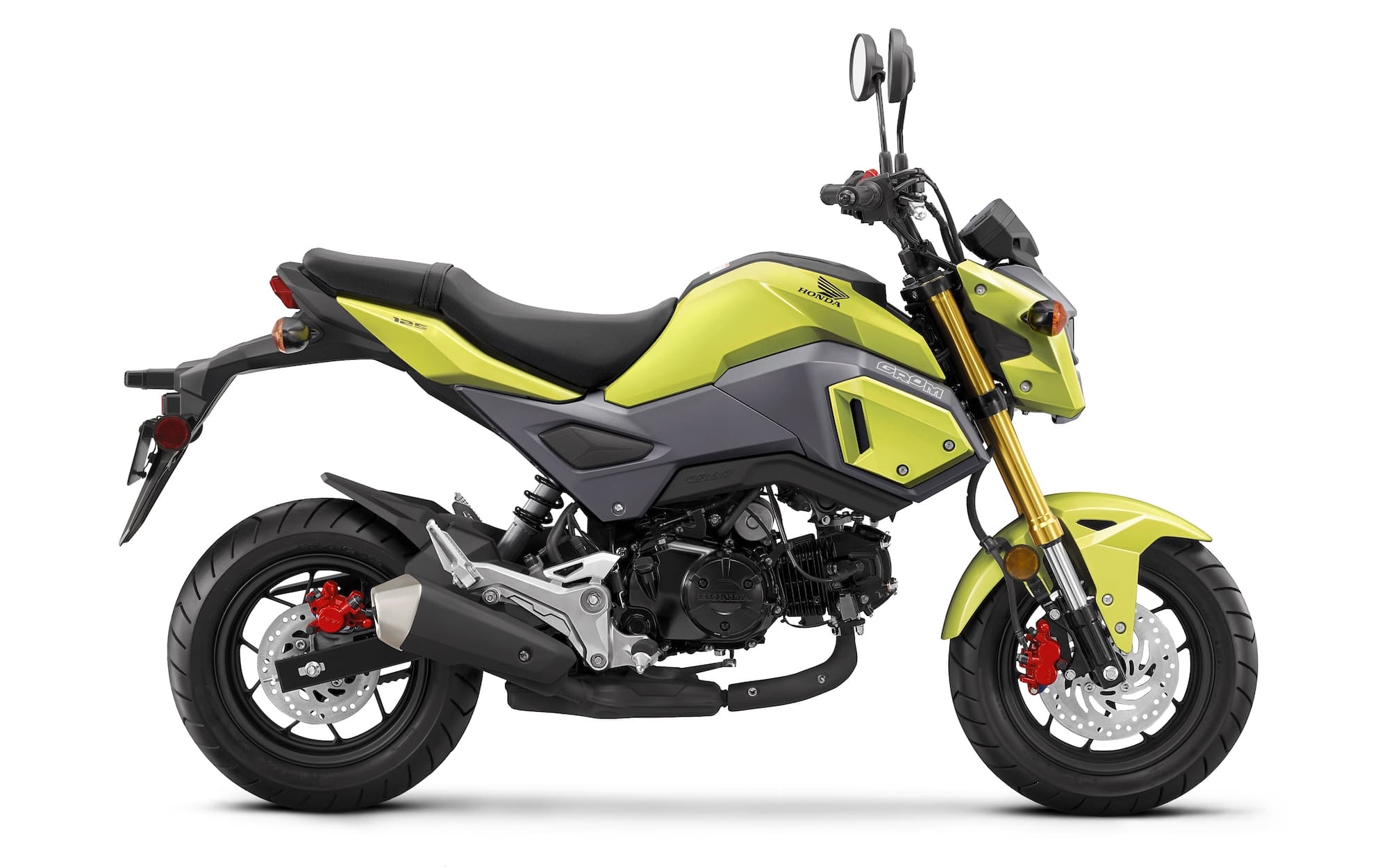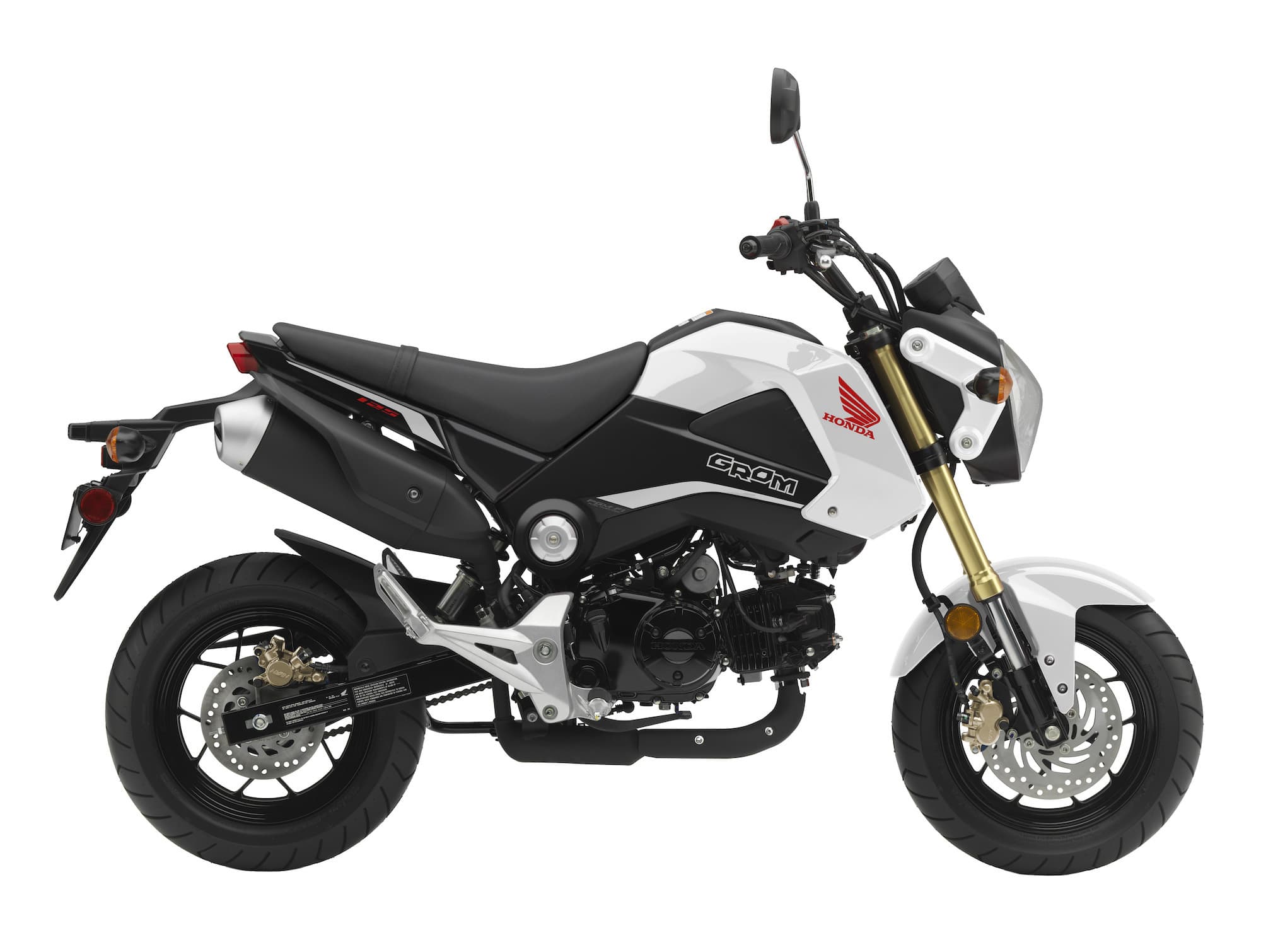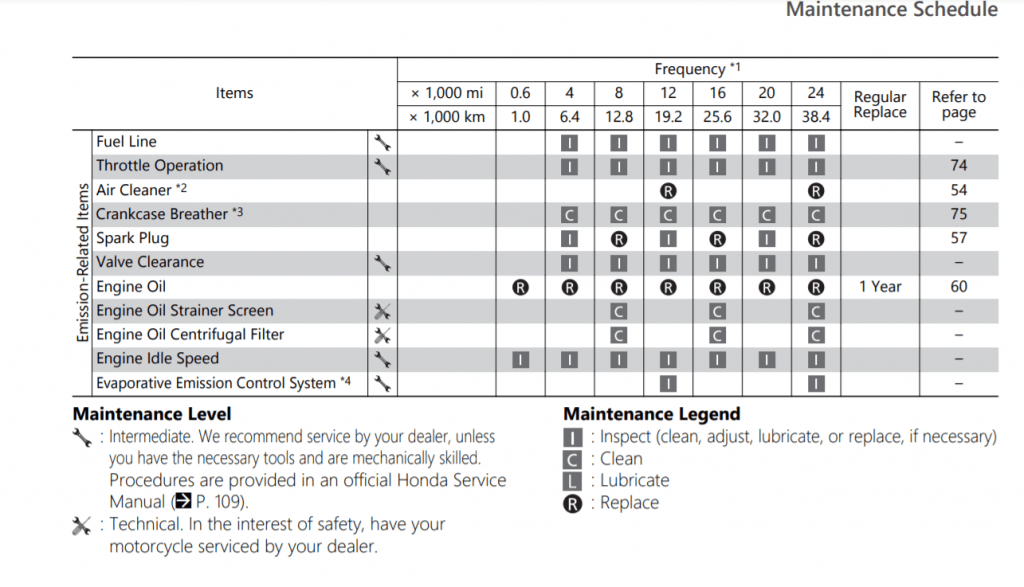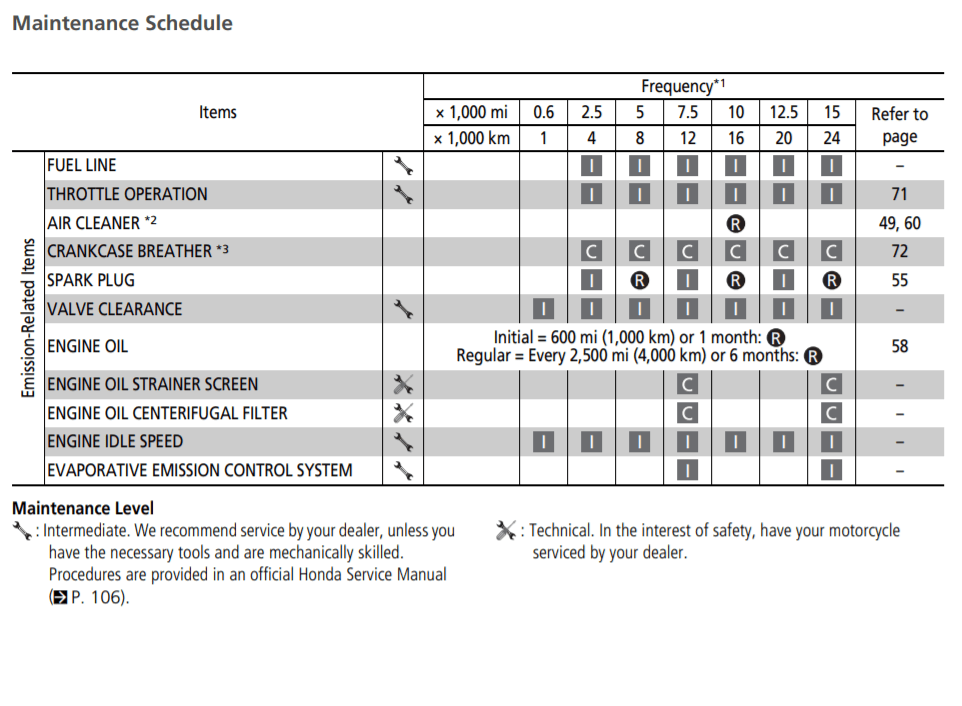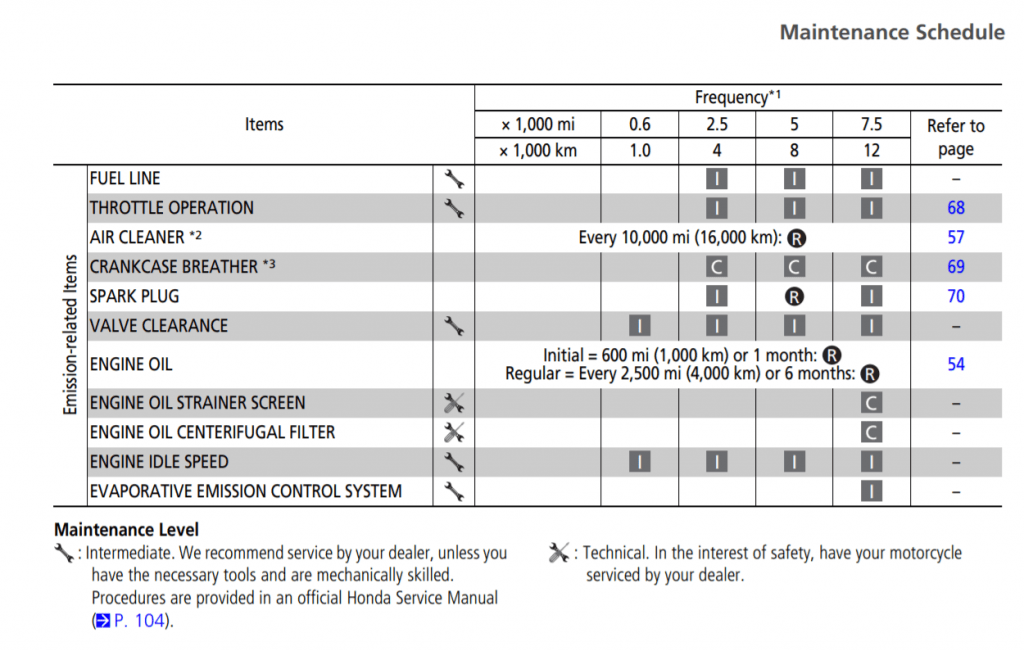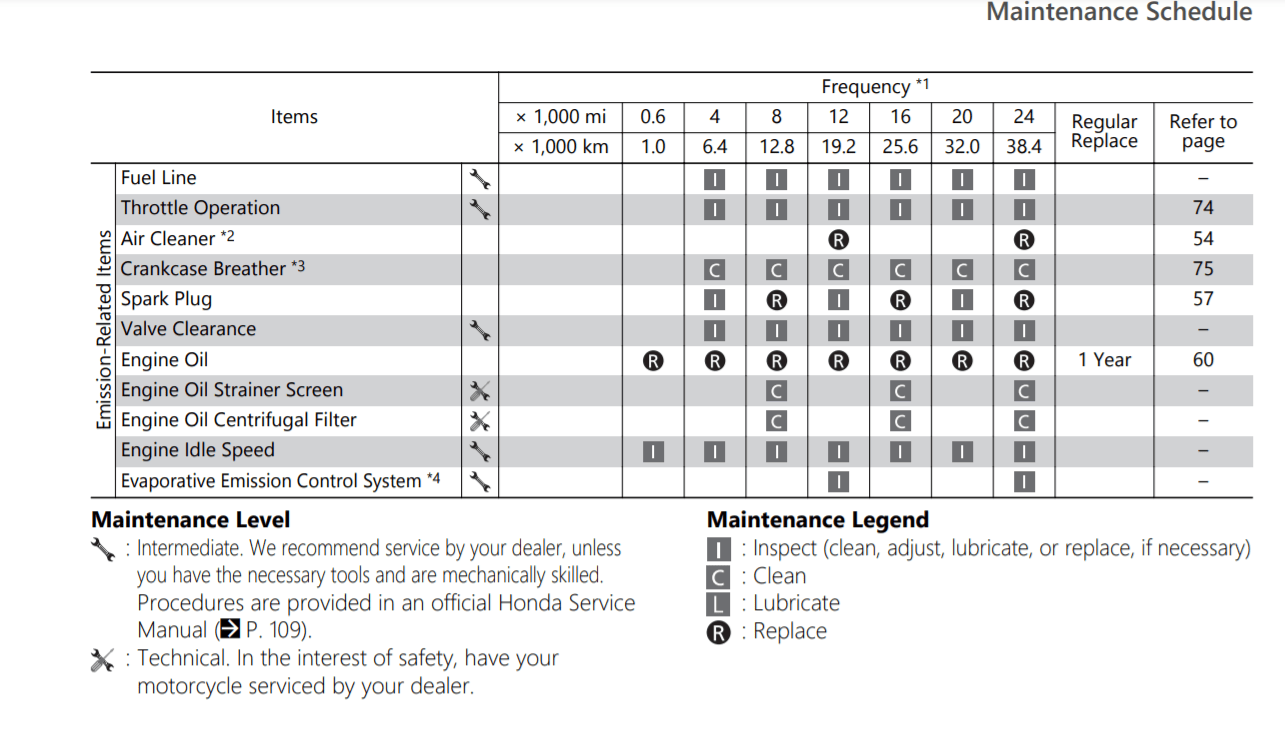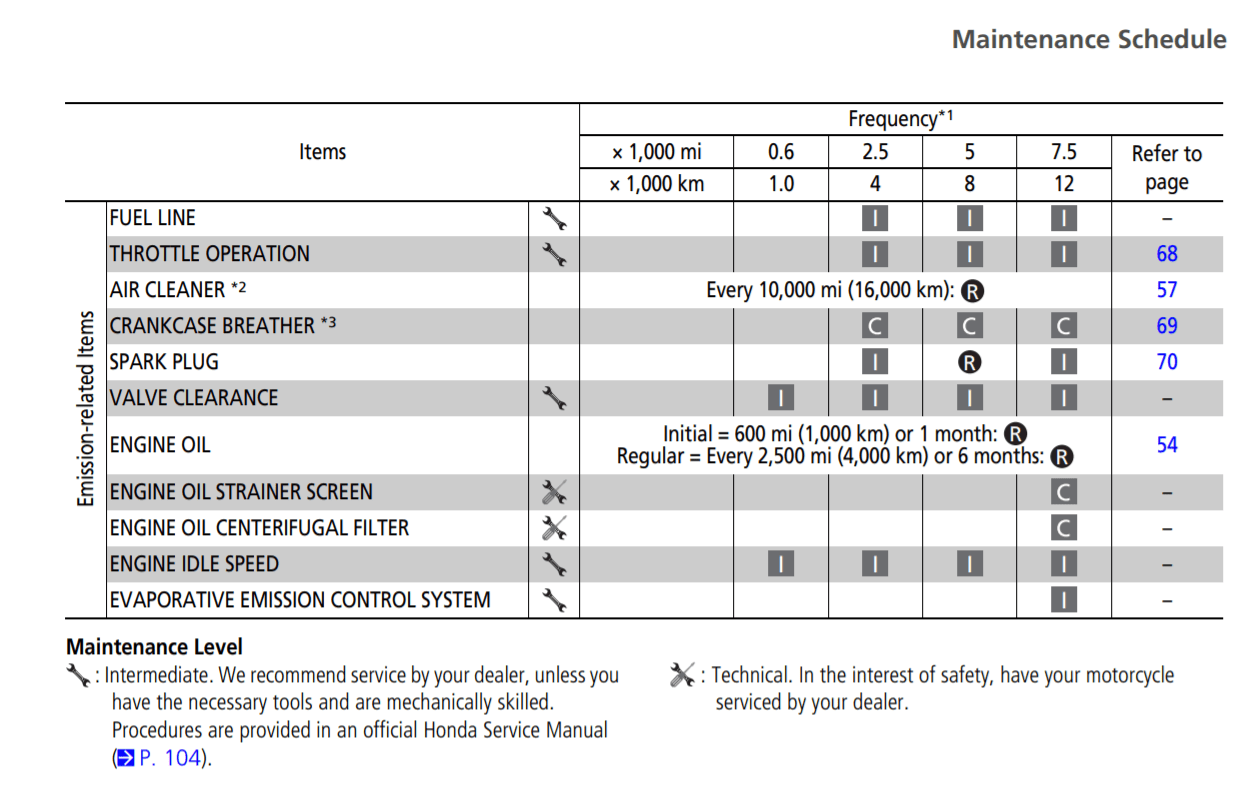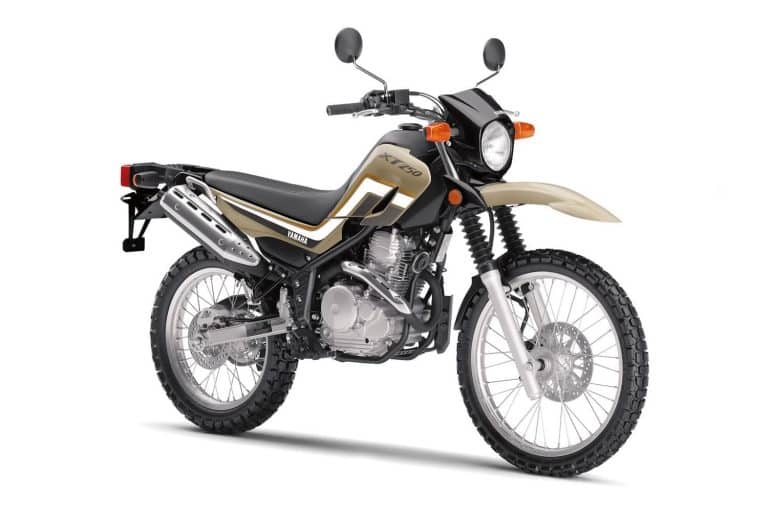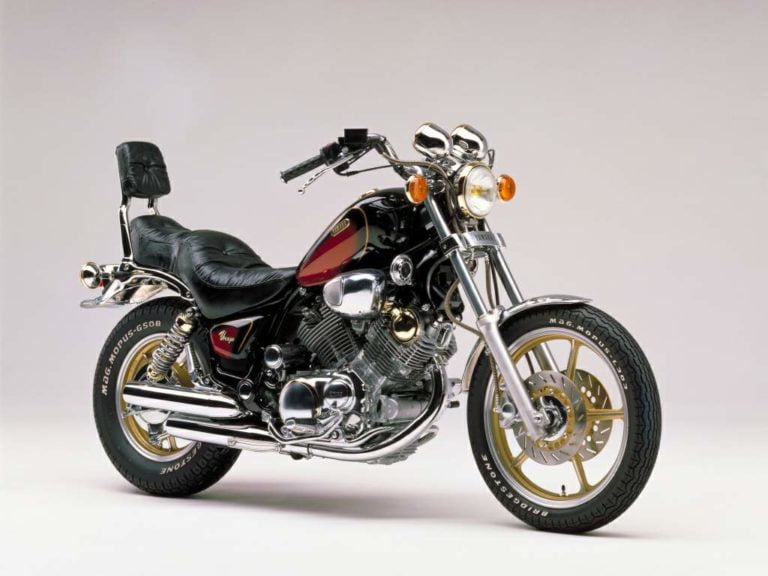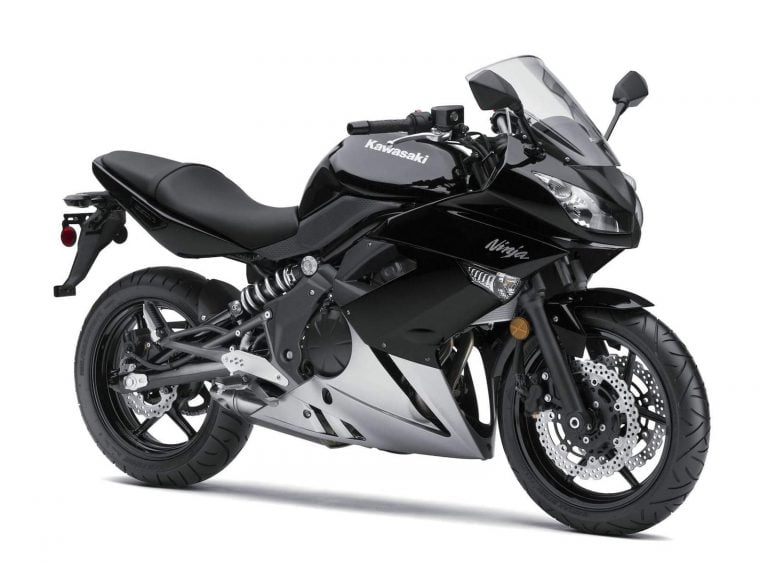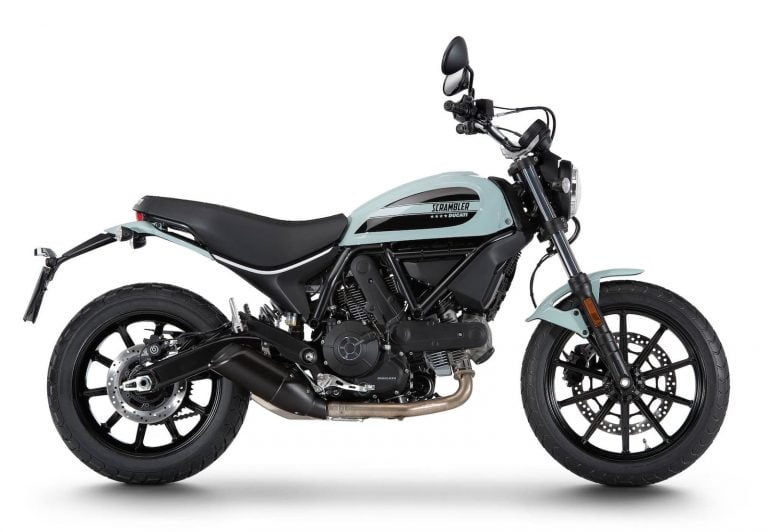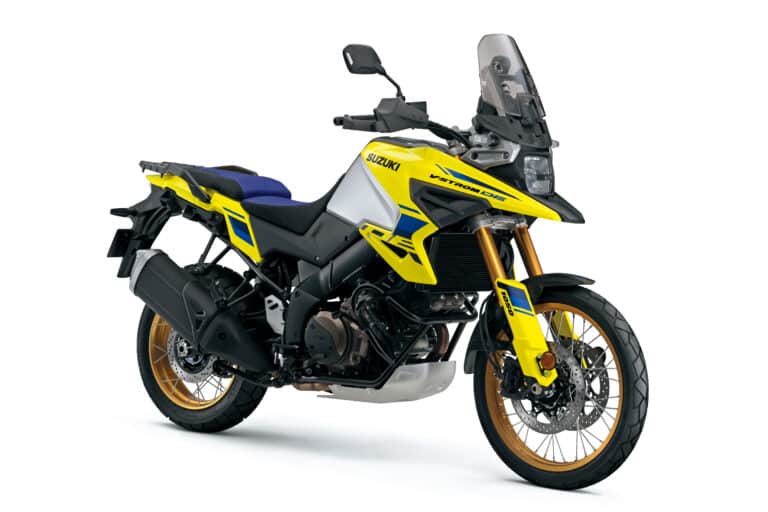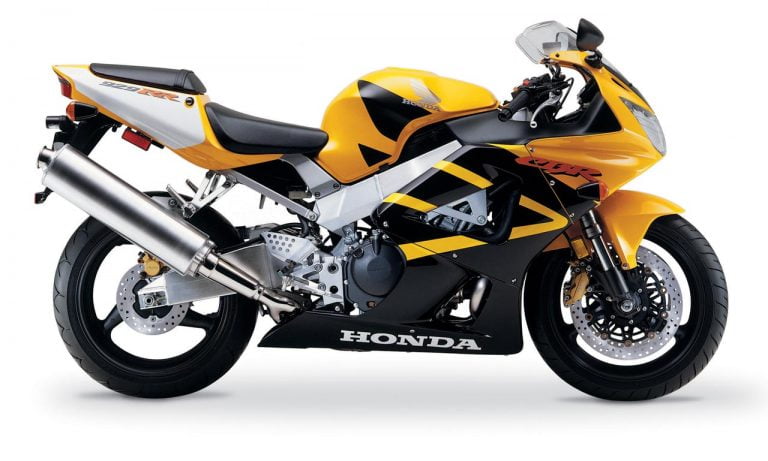Honda Grom MSX125 (2014-2020) Maintenance Schedule and Service Intervals
This is the maintenance schedule and associated service intervals for the Honda Grom (a.k.a. the Honda MSX125 in Europe and East Asia), a 125cc compact motorcycle, related to other small motorcycles like the Honda Monkey.
Here are the other Honda miniMOTO maintenance schedules:
- Honda Monkey (2018-2021)
- Honda Super Cub C125
- Honda Grom 2014-2020
- Honda Grom 2021+
- Honda Navi 2016+ (2022+ in the US)
- Honda Trail 125 / CT125 2021+
The Grom/MSX125 won the Motorcycle USA Motorcycle of the Year prize for 2014, but didn’t rest on its laurels, and has continuously improved since then to meet emissions standards, slightly increase power, and modernize styling.
The Grom has evolved slightly over the years.
- In 2016/17 it got a refresh with new LED lights, a re-designed fuel tank and side panels, seat, and underslung exhaust.
- In 2018 it got ABS as an option, and standard ABS in most countries
In 2021 Honda released the new 2021/2022 model year Honda Grom MSX125. They made it Eero 5 emissions compliant, gave it slightly more power, quick-detach body panels, an LCD dash, and an IMU to assist with ABS. And a fifth gear.
The service schedule is slightly different, both in schedule and in parts.
This site has links for things like oil and spark plugs from which we earn a commission (which unfortunately nobody can save, not even us). If you appreciate this work, then please use those links. Thanks!
Service intervals for the Honda Grom (2014-2020)
Like other motorcycles in the Honda miniMOTO range (which mostly share the same engine), the service intervals for the original Honda Grom are a 4000 mile / 6400 km service interval at which you not only change the oil, but also inspect or replace the spark plug and check the valve clearances.
The earlier Honda Grom, like most variants of the miniMOTO range, doesn’t have an oil filter to replace and just have an oil screener and centrifugal filter. Honda recommends you get a mechanic to service these properly. This changed in the later gen Honda Grom which got a user-serviceable oil filter.
Make sure you keep your chain clean and lubed. It’s likely you kind of flog your Grom and so that chain will be put to work!
Luckily, as an air-cooled engine, there’s no liquid coolant to replace in the Honda Grom.
What you need to service your Honda Grom (2014-2020)
Doing your own service on the Honda Grom is part of the ownership experience. But what oil, spark plugs etc. should you use? Apart from general standard motorcycle maintenance tools, here’s what you need to service your Honda Grom.
| Part | Honda Grom Spec |
|---|---|
| Oil | Honda recommends SAE 10W-30 oil that’s API classification SG or higher or JASO T 903 standard MA or higher. There are a lot of oils that fit the bill, but Honda recommends Pro Honda GN4 10W-30. Note — there’s no oil filter to change on the Grom (pre-2021), just an oil spinner to clean out (see the schedule below) |
| Spark plug | Manual specifies NGK CPR6EA-9. |
| Brake fluid | The manual specifies DOT 3 or DOT 4, but recommends Honda DOT 4 brake fluid. |
| Air filter | Use a K&N HA-1313 as an easy drop-in replacement. |
| Chain maintenance | Service your chain regularly! Either use a Motul chain care kit, or with Motul chain paste. |
| Grease | Use lithium soap-based grease and silicone grease for external pivot points, like the sidestand and bearings. |
| Brake pads | EBC FA375HH for the front and FA629HH for the rear. |
Honda Grom Maintenance Schedule
Below is the maintenance schedule for the Honda Grom, made more legible from the manual.
The maintenance schedule has changed a bit since previous years of the Honda Grom (since 2014) in the following ways:
- Honda now recommends changing a few parts more often — including the air cleaner and oil strainer
- The inspection intervals for a few other chassis items were tweaked (in non significant ways)
Notes on the maintenance schedule
- The maintenance schedule is every 4K miles or 6.4K km for the Honda Grom. It repeats in cycles of 1-3 periods; follow this pattern after the end of the maintenance schedule.
- The break in is omitted (it has already passed for this model). It was to change the oil filter and set the idle speed.
- Honda recommends you get a qualified mechanic to check the wheels, tyres, and steering head bearings, and to clean the oil strainer screen and centrifugal filter.
Maintenance Procedures:
- I: inspect and clean, adjust, lubricate, or replace, if necessary
- C: Clean
- R: replace
| x 1000 mi | 4 | 8 | 12 | |
|---|---|---|---|---|
| x 1000 km | 6.4 | 12.8 | 19.2 | Every |
| Drive Chain (Motul chain paste) | 300 mi (500 km): I, L | |||
| Engine Oil (Pro Honda GN4) | R | R | R | 1 year: R |
| Engine Oil Strainer Screen | C | |||
| Engine Oil Centrifugal Filter | C | |||
| Spark Plug (NGK CPR6EA-9) | I | R | I | |
| Valve Clearance | I | I | I | |
| Brake Fluid (Honda DOT 4) | 2 Years: R | |||
| Fuel Line | I | I | I | |
| Throttle Operation | I | I | I | |
| Air Cleaner (HA-1313) | R | More often when riding in rain / dust | ||
| Crankcase Breather | C | C | C | More often when riding in rain / at full throttle |
| Engine Idle Speed | I | I | I | |
| Evaporative Emission Control System | I | |||
| Brake Pad Wear | I | I | I | |
| Brake System | I | I | I | |
| Brake Light Switch | I | I | I | |
| Headlight Aim | I | I | I | |
| Clutch System | I | I | I | |
| Side Stand | I | I | I | |
| Suspension | I | I | I | |
| Nuts, Bolts, Fasteners | I | |||
| Wheels/Tires | I | I | I | |
| Steering Head Bearings | I |
Tyre size and tyre pressure for the Honda Grom
The manual for the Honda Grom specifies these tyre sizes and recommends the following tyre pressures (when cold):
| Tyre | Size | Tyre pressure |
|---|---|---|
| Front | 120/70-12 51L | 29 psi / 200 kPa / 2 bar |
| Rear | 130/70-12 56L | 29 psi / 200 kPa / 2 bar |
The early Honda Groms shipped with Vee Rubber V119C or IRC NR77U tyres, but use your judgment (or whatever is available).
About the Honda Grom (2014-2020)
The Honda Grom is a sporty, pocket-sized model that inspired a cultural revolution. It’s one of Honda’s big sellers, and despite its diminutive size, isn’t always thought of as a “learner” bike.
The Grom is one of those bikes people describe as “fun”, which is another way of saying… slow, but good for what it’s for (which isn’t for going fast in a straight line). It’s hard to go fast with 6 kW (9 hp), but it’s still easy to throw the Grom into corners, and even get your knee down.
However, even though it’s slow and relatively cheap, the Grom is a high-quality bike with components that one doesn’t throw away on a basic commuter. For example, upside-down forks: you don’t see this on something like the Honda CB125e, for example.
The Grom’s best feature has stayed constant — its tiny size that makes it very approachable for new riders as well as fun for experienced customers. ABS gives that edge of safety (as well as regulatory compliance) for riders in all conditions.
The updates in 16/17 make the Grom distinctly more modern, and the dash updates in 2021 bring it more into the 21st century.
The Honda Grom is highly fuel-efficient, reliable, and difficult to break, even if you drop it.
Its single-cylinder air-cooled fuel-injected engine is basically bulletproof as long as you regularly change the oil and keep it lubed.
The Honda Grom uses a few high-tech components, too, like an off-set cylinder and a lower crank inertia for responsive throttle feel and smooth power delivery. This is what differentiates the Honda Grom from just another basic commuter — you’re not likely to see many Groms used for Uber Eats deliveries (well not as many as something like a Honda CB125).
These are the basic specs for the 2014-2020 Honda Grom:
- Engine Type: Air-cooled single-cylinder four-stroke
- Displacement 125cc
- Compression Ratio: 9.3:1
- Induction: PGM-FI with automatic enrichment
- Valve Train: SOHC; two valves per cylinder
- Transmission Four-speed (five speed from 2021)
Kawasaki also make a very similar-spec motorcycle to the Honda Grom, the Z125 Pro.
In 2021, Honda released their new 2021 Honda Grom, recognisable from the quick-detach body panels. Its maintenance schedule is slightly different.
Manual for the Honda Grom
The above maintenance schedule is adapted from the user’s manual for the 2018-2020 Honda Grom.
We checked the earlier manuals for changes, and found nothing significant. See screenshots from a few of the manuals below.
You can download it from here.
